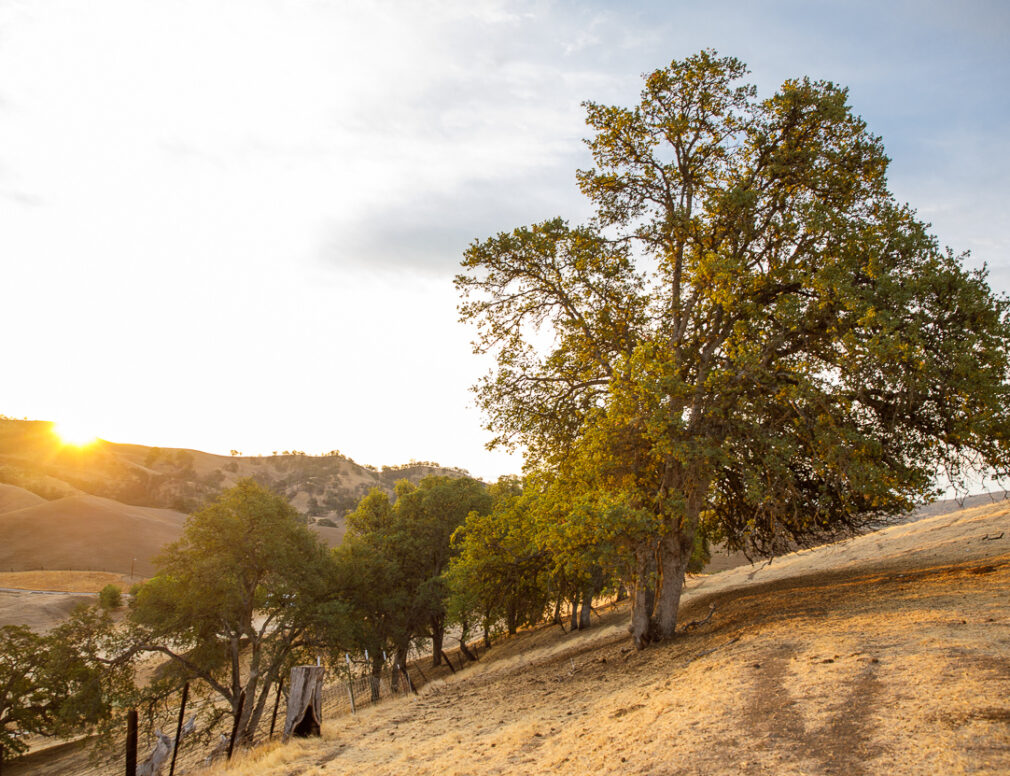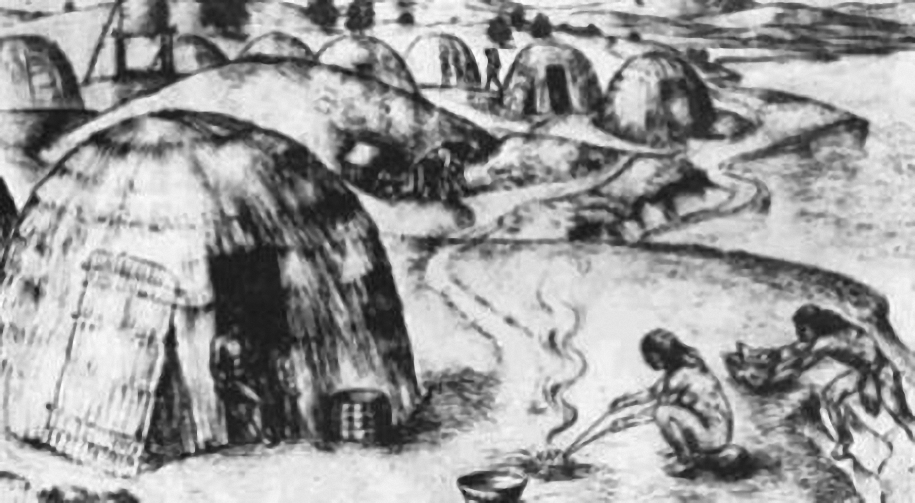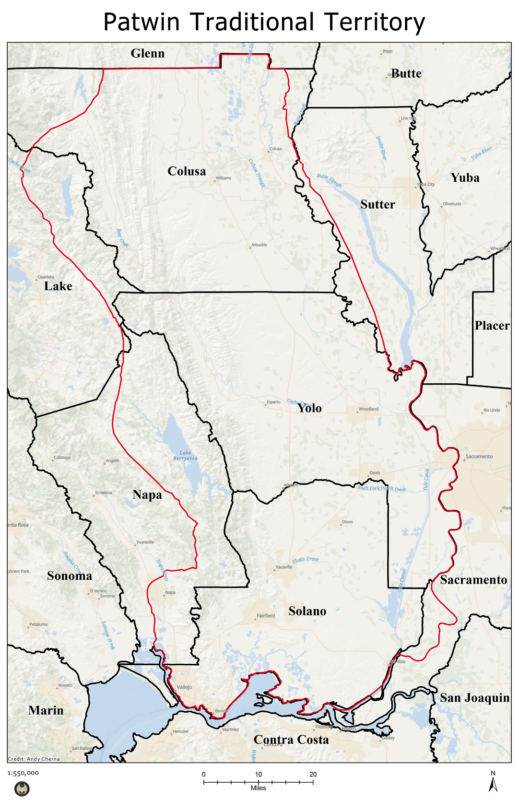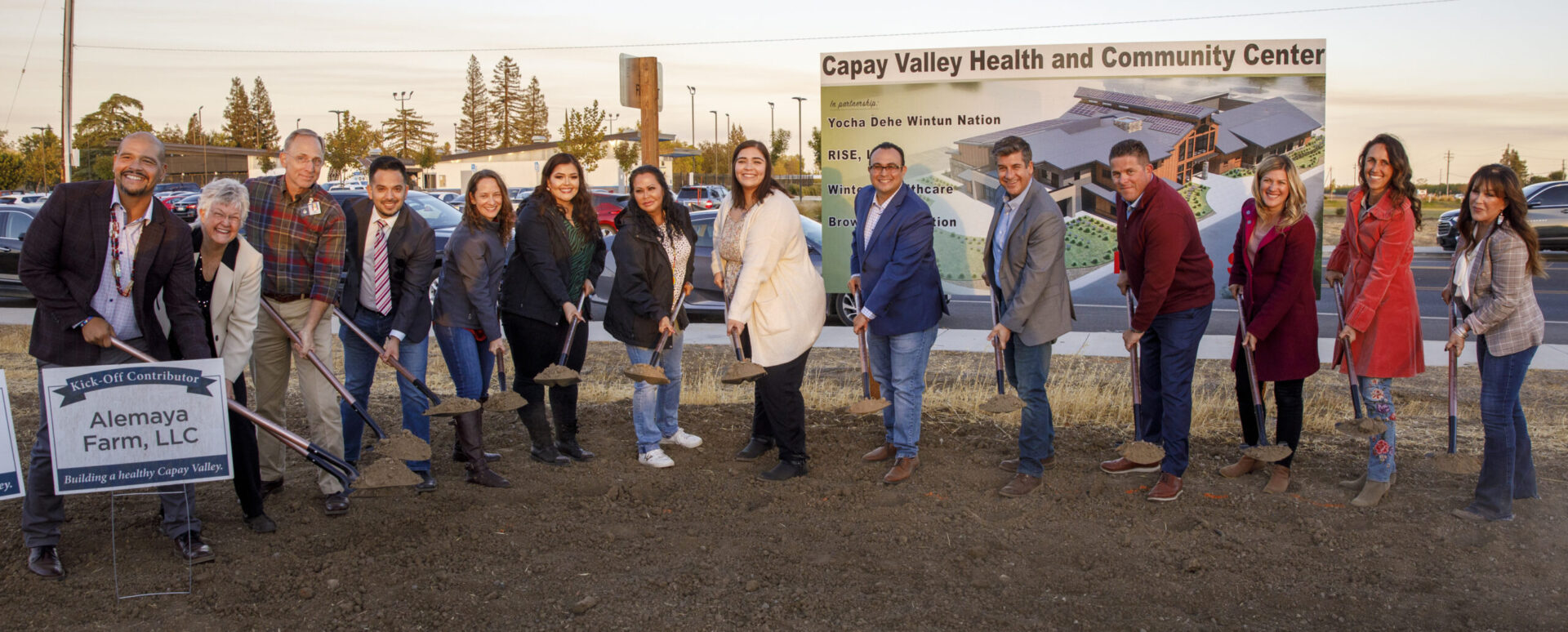
Our Story
The story of our people is in fact many stories, passed down by spoken word from generation to generation over millennia. From the creation of earth and the first Patwin village by coyote, hawk and turtle in mythical time, to the creation of fire, our language and stories hold within them all that is dear to our people. Our stories take place in our land and feature the animals, plants and geographical features of our region, and between the lines they tell us what life was like in the old times.
Our Patwin ancestors lived in villages spread across a large territory that spans from Sonoma Valley in the west to the Sacramento River in the east, and from just south of Clear Lake in the north to San Pablo Bay in the south. Our people traveled among these villages for ceremonies and trade. Footpaths left by these journeys laid the foundation for some of our modern roads, such as California State Route 16, which is now the main road along Cache Creek.
Our land was rich in animal and plant resources: Tule elk and antelope grazed in abundance, salmon ran the rivers and oak groves dotted the grasslands. Subsistence was based on hunting and fishing, as well as the gathering of acorns, clover, wild oats, manzanita berries and other native plants. We maintained this healthy environment with controlled burns, which stimulated new green grass for the herds and produced more seeds of native grasses and wildflowers for collecting to eat.

Near Extinction to Self Determination
Foreign invasion of our lands brought our people and language to near extinction. Our ancestors were enslaved by Spanish missionaries and murdered by Americans prospecting for gold. Our grandparents and great-grandparents were forced to leave their families to attend boarding schools, where they were punished for speaking our language and practicing our customs.
By the early 20th century, our population had dwindled from thousands to about twenty adult citizens living in six dilapidated homes on the bank of Cache Creek in a small town called Rumsey. Life was very hard: there was no running water, very little heating wood, and not enough arable land to make a living. Yet, when the federal government gave us the option of terminating our tribal status for a paltry payout, we rejected that plan and embarked on the journey that has resulted in our current status as a sovereign nation empowered to govern its own people and land.
Translated literally, Yochadihisel means home (dihi) by the spring water (Yocha), or spring home. But to say Pele is (“We are”) Yochadihisel is saying more than this is our home, it is saying that we belong to this place. We belong here and it is our job, part of our life’s work, to protect this place and to ensure it is a place where our taichu (younger relatives) will also belong. This is how we have always lived here, how we survived near extinction, and how our children live here now and in the future.

Commitment to Preserving and Protecting Our Language and Culture
For us the meaning of success is not just a thriving community and prosperous enterprises; it is also the recovery and revitalization of our language and traditions, as well as the protection of cultural and burial sites from disturbance and desecration. The mission of the Yocha Dehe Wintun Nation Cultural Resources Department is to identify, preserve and protect Patwin language, culture and sacred sites.

Giving the Acorn
Consistent with a tradition of giving, Yocha Dehe is committed to sharing the benefits of its economic success, by investing in communities within its ancestral territory, supporting other tribal and non-tribal governments and helping people in need.


